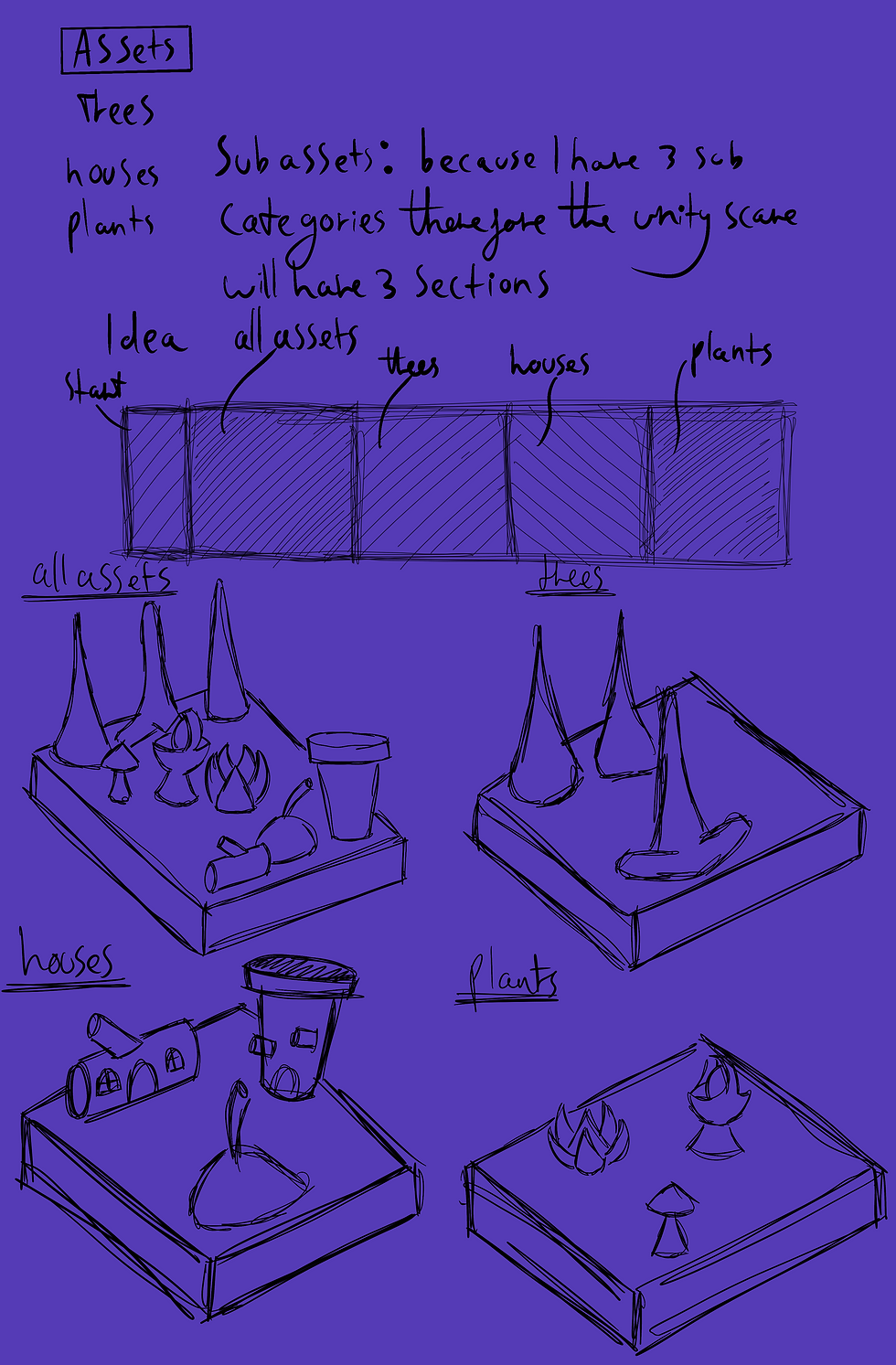Week 2 - notes
- kt1g19
- Feb 19, 2021
- 3 min read
Project scope can list the following:
· A list of features of game requirements that the game must have - in the context of this module list of features will be included in the game design document, these are essentially the list of mechanics concept art and 3D models that the team has to create. So for this you have to go to the game design document of the game and list out the features that’s mentioned
· And then an estimated time paragraph - in the context of this module this would be estimating how long it will take to complete the task so for example if you’re doing 3D model of a forest then you have to calculate how long it will take you to draw up the concept art and then 3D modelling it.
· The development cost.
So essentially it is a technique for time and task management.
Last week another lecture James mentioned that the vertical slice is essentially like slice of the cake but the project scope is how thin or thick that slice of cake is going to be.
This technique isn’t just useful when it comes to developing a game it feels to be really useful for freelance work as well when you’re working freelance the client the client would have to know how long of a timeframe that the design has to work on in order to complete the task.
The problem is that the project scope are not an software in itself so it’s not simply enough just to show mechanics and features that has to be some sort of context for the show the features to make sense, for example you might have a cool idea from mechanic we have two create a level in order to display that mechanic what also is very important when creating a project scope is to have something that small and condensed rather than having something as big and empty so in order to display the mechanics of features in the game it would be much preferable if the setting was smaller condensed you can show all the mechanics in this potential.
When creating these features you have to make a list matter list is a list of features that are going to make the game work so for example if you do a character animation you need a piece of code to activate the animation, so you can have:
· programming assets
· Animation assets
· 3D modelling assets
so to help me with the project scope is a rough structure order:
· features list
· Presentation format
· Asset list
· Your timeframe/deadline
East team member will, or need to develop quickly, some expertise of the pipeline of asset creation. Taking an idea from concept through to the finished article so for example 3D modelling
Let us say you had an animator and a rigger and a sculpture and material Peter so essentially there’s three people in the in the 3D modelling team and it takes the sculpture about two days to its cultural body and then the material painter takes three days for the materials to be implemented and 3D and then takes four days for the animator to rig the entire body and you have to create 10 models if he believed that it will take 90 days to create 10 models then most likely doing it wrong Because you're assuming that after the modeller creating the model then the other team members start working if you’re doing it in 30 days then you’re doing it the best way because when it comes to task management you guys are stagnating between another.
So when creating a scope analysis yesterday three things:
· Identify the pipeline for development.
· Calculate the people time needed to make it.
· Calculate the actual time needed to make it.
The purpose of using this activity is to determine the date of the project milestones and its feasibility so essentially a project is feasible if they can deliver all of its milestones in its required budget and if it can’t do their then you have two make your project scope smaller the problem here is to prioritise what assets needs to be created so for example making a musical soundtrack might be nice more but using your entire time creating a soundtrack way should have been using that time to make 3D models or animations it is not feasible.

Comments